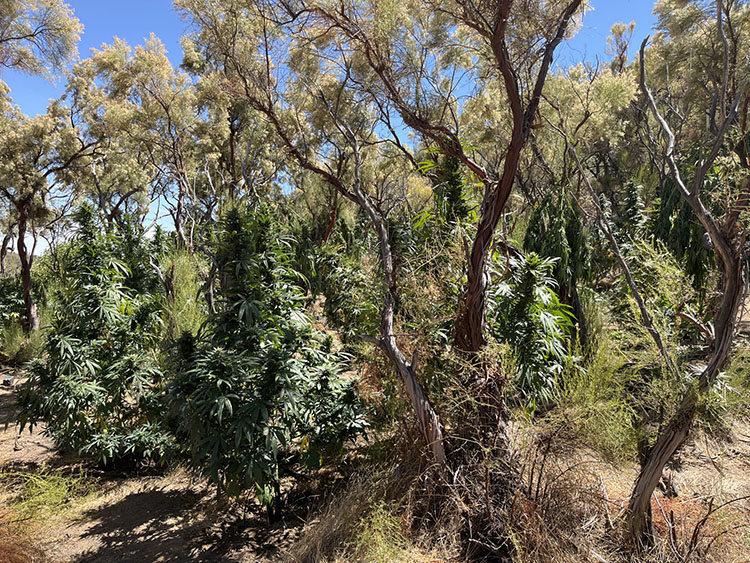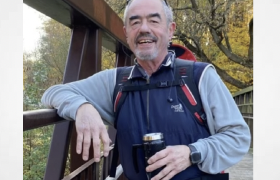SACRAMENTO — California State Parks continues to combat illegal cannabis grows within and near state park properties through its Cannabis Watershed Protection Program (CWPP). During the 2024 season, the CWPP’s Special Enforcement Team (SET) led 16 operations in or near state parks’ properties resulting in 7 arrests and the removal of 25,558 cannabis plants, 4,820 pounds of processed cannabis, and 18 firearms. Numerous environmental crimes related to water diversion and water pollution were also documented.
“Illegal cannabis cultivation poses a serious threat to California’s unmatched natural resources, and we continue to make progress identifying and eradicating grow sites in and around State Parks,” said State Parks Director Armando Quintero. “The State Parks Cannabis Watershed Protection Program team will never stop working to protect these most valuable public lands and ensure their environments are safe for generations to come.”
 Illegal Cannabis Growing at Anza Borrego Desert State Park. Photo from California State Parks.
Illegal Cannabis Growing at Anza Borrego Desert State Park. Photo from California State Parks.
At California’s largest state park, Anza- Borrego Desert State Park, the CWPP removed 4,672 cannabis plants, approximately 500 pounds of waste, and 1,000 feet of irrigation line. SET works closely with both the Department of Justice’s Eradication and Prevention of Illicit Cannabis (EPIC) program and Governor Gavin Newsom’s Unified Cannabis Enforcement Task Force (UCETF).
The state park units that SET led law enforcement operations in or around this year were Anza- Borrego Desert State Park, Clear Lake State Park, Colonel Allensworth State Historic Park, Lake Oroville State Recreation Area, Onyx Ranch State Vehicle Recreation Area, Saddleback Butte State Park and Smithe Redwoods State Natural Reserve.
Additionally, SET and other CWPP staff fully remediated 23 historic grow sites occurring on State Park property. These efforts resulted in the removal of approximately 16,000 pounds of waste, including 33,000 feet of plastic irrigation tubing and more than 600 pounds of fertilizer . The environmental impacts of these illicit grow operations can be devastating, such as polluting waterways and altering native ecosystems, and remediation is the first step in addressing affects they have on the landscape.
###
The Cannabis Watershed Protection Program was established in 2019 with support from the Cannabis Tax Fund, to prevent and alleviate environmental damage from cannabis cultivation. Since 2019, with Cannabis Tax Fund support, State Parks has been able to dedicate staff to proactively identify illegal cannabis cultivation on State Parks properties, clean up trash and hazardous materials from the sites, and begin to restore resources damaged in watersheds affected by cannabis cultivation. The CWPP team is a multi-disciplinary collaboration including law enforcement, natural and cultural resource managers, road and trail maintenance crews, and other technical experts, working together on common goals. To learn more, visit the Cannabis Watershed Protection Program’s webpage.
Subscribe to California State Parks News via e-mail at [email protected]
California State Parks provides for the health, inspiration and education of the people of California by helping to preserve the state’s extraordinary biological diversity, protecting its most valued natural and cultural resources, and creating opportunities for high quality outdoor recreation.



















